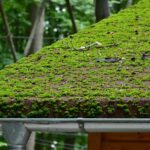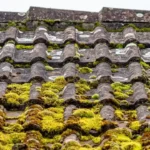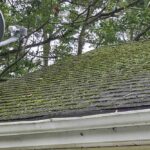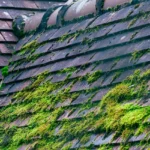A storm can dramatically change the condition of your roof. Knowing how to inspect roof after a storm is crucial to safeguarding your house. As a homeowner, understanding the steps to assess roof damage not only protects your home but also helps avoid costly repairs.
This guide will walk you through every essential step needed to perform a thorough roof inspection after a storm.

Why You Should Inspect Your Roof
Storms can bring strong winds, heavy rain, hail, and even falling branchesall of which pose threats to the integrity of your roof. Left unchecked, storm damage can lead to leaks or structural weaknesses. Thus, a timely inspection can save you from extensive damage and repairs.
Preparing for the Inspection
Before you begin your inspection, ensure you have the right gear. Wear sturdy shoes with good grip, use a stable ladder, and always prioritize your safety. Its often best to let a professional handle complex inspections, especially if the damage is extensive. For roofing maintenance tips, refer to reputable sources.
Understanding Roof Areas to Inspect
- Shingles
- Flashing
- Gutters
- Soffits and Fascias
Each area demands detailed attention to spot any severe damage.
Inspecting Shingles
After a storm, shingles are often the most visibly affected. Look for missing, cracked, or curled shingles. Damaged shingles should be repaired or replaced immediately to prevent water infiltration.
For detailed guidance on shingle care, refer to our article on cleaning roof shingles.
Evaluating Roof Flashing
Flashing is a critical component that prevents water from entering roof openings. After a storm, inspect for any dislodged or damaged flashing, especially around chimneys, vents, and skylights.
Checking Gutters and Downspouts
Check that gutters are firmly attached and free from obstructions such as leaves and debris. Clear gutters prevent water from backing up and causing damage to your home’s foundation.
Inspecting Soffits and Fascias
The soffit and fascia support the lower edge of the roof and play a role in ventilation. Examine them for rot and water damage, which can compromise the roof’s structure.
Indications of Internal Damage
Sometimes, damage is visible from inside the house. Look for water stains on ceilings and walls as these can indicate leaks caused by roof damage.
Conducting a Detailed Roof Inspection Safely
Inspecting a roof requires caution. Always prioritize safety by using a solid ladder, a toolbelt for carrying items, and protective gear. If the roof is steep or wet, avoiding climbing is wise.
Getting Professional Help
If you’re unsure or the damage seems extensive, hire a professional roofer. Professionals have the expertise to handle even the most challenging cases safely and effectively. For a checklist, review our DIY Roof Inspection Checklist.
The Financial Benefits of Regular Inspections
Regular inspections help catch issues early, saving money on repairs. Most importantly, maintaining your roof boosts the overall value of your home, an essential factor for resale.

FAQs
What should I do if I find roof damage after a storm?
Contact a professional roofer for an inspection and potential repairs. Address small issues immediately to avoid larger problems.
Can I inspect my roof without a ladder?
Yes, use binoculars for a preliminary inspection from the ground. Learn more about spotting damage by reading our guide on spot roof damage.
How often should I inspect my roof?
Inspect your roof after any major storm and at least twice a year.
For further information on maintaining your roofs longevity, consider our Roof Maintenance Guide.
By taking these steps and staying informed, you can protect your home from future storm-related damages and ensure your roof remains in excellent condition.
This article contains affiliate links. We may earn a commission at no extra cost to you.








